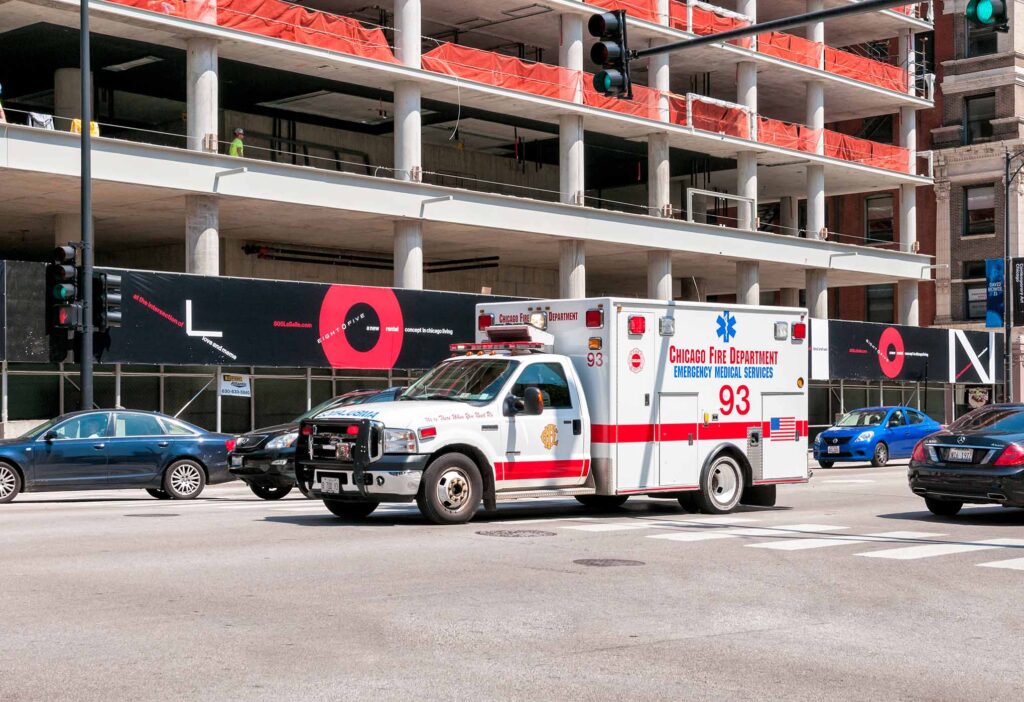
Shutterstock/elesi
Recently, we have seen the NREMT phase out the psychomotor exams for all certification levels. For students, the prevailing opinion seems to be excitement towards one less end of course certifying exam. But as an educator, is this really a win?
Commonly, I hear my EMT students, and even other educators, say phrases such as, “The streets are nothing like the sheets, just memorize the sheets to get through the test.” Are we doing our students, and more importantly, the future of EMS, a disservice by not teaching the sheets?
Let’s talk about a familiar call.
It’s 3 a.m. in the morning, you are a paramedic with an EMT partner. You are on a 24-hour shift, working for a rural EMS system. Your EMS system is taxed and you and your partner have already run 12 calls this shift when you are finally lying down to get some much needed rest. The tones drop; a motor vehicle accident on the interstate for a single vehicle roll over.
You arrive on scene at 3:10 a.m. to find a single vehicle with heavy damage. The vehicle is now upright, into a tree with a single male patient. There is airbag deployment with steering wheel deformity.
Your patient is alert, stating that he is having some chest pain, neck pain, and shortness of breath. You put on a c-collar and he sits on your stretcher. You strap him onto your stretcher and load him into your ambulance. You fail to ever trauma naked him.
You start an IV, while your partner gets a set of vitals, which are currently stable. You put some of the patient’s demographics into your laptop. You depart scene emergent to the trauma center at 3:25 a.m.
Enroute to the hospital, the patient begins to become lethargic, his work of breathing increases and his vitals begin to deteriorate. You simply monitor and reassess as you are close to the hospital.
You arrive at the hospital. Upon arrival in the trauma bay, your polytrauma patient has a core body temperature of 33C. He is hypothermic, hypovolemic, acidotic, hypocalcemic, and has missed injuries.
How did we statistically cause this patient’s demise? Are we attributing bad patient outcomes and mortality to “fate” because we cannot take accountability for our bad practices? Let’s review.
- Immediately there was a failure to trauma naked this patient
- Statistically speaking, EMS fails to find 13.9% of injuries in polytrauma patients that a total body CT later found at the hospital. Nearly all of these injuries later found are clinically significant.1 Surely you don’t find injuries that you don’t look for.
- Scene time > 10 minutes
- Scene times greater than 10 minutes are associated with significantly greater mortality rates in major trauma. Scene times greater than 10 minutes have a 33.3% mortality vs an 8.7% for scene times less than 10 minutes.2
- Failure to treat for shock
- Nearly all major trauma patients are in shock, at 74.7%, the importance of keeping these patient’s warm and properly treating for shock cannot be understated.3
- Accidental hypothermia was observed in 44% of prehospital trauma upon hospital arrival.4 Allowing our trauma patient’s core body temperature to drop below 32 C ensures a 100% chance of mortality.5
We can all agree that EMS can be a high stress for a high stakes environment. We don’t rise to the level of our expectations; we fall to the level of our training. We must rely on muscle memory for the moments that are stressful. Having a reliable foundation to fall back on is an absolute when time is of the essence and stress is the highest.
The sheets we were all taught in our initial EMT education cover basic trauma and medical skills that would have prevented the aforementioned mistakes. They are not meant to make robots but rather create good muscle memory for when all else fails.
References
- Kok D, Oud S, Beenen L, et al. Delayed diagnosed injuries in trauma patients after initial trauma assessment with a total-body computed tomography scan. Injury. 2024;55(5). https://www.sciencedirect.com/science/article/pii/S0020138323010367
- Yaowapha Siripakarn, Laongdao Triniti, Winchana Srivilaithon. Association of Scene Time with Mortality in Major Traumatic Injuries Arrived by Emergency Medical Service. Journal of Emergencies, Trauma, and Shock. 2023;16(4):156-160. doi:https://doi.org/10.4103/jets.jets_35_23
- Luo J, Chen D, Tang L, et al. Multifactorial Shock: A Neglected Situation in Polytrauma Patients. Journal of Clinical Medicine. 2022;11(22):6829. doi:https://doi.org/10.3390/jcm11226829
- Jalali A, Norouzadeh R, Dinmohammadi M. Accidental hypothermia and related risk factors among trauma patients in prehospital setting. Disaster and Emergency Medicine Journal. 2023;8(1):21-26. doi:https://doi.org/10.5603/DEMJ.a2022.0041
- GENTILELLO LARRY M, PIERSON DAVID J. Trauma Critical Care. American Journal of Respiratory and Critical Care Medicine. 2001;163(3):604-607. doi:https://doi.org/10.1164/ajrccm.163.3.2004106
Megan Golbus is a lieutenant/paramedic for Central Berkeley (SC) Fire and EMS.

